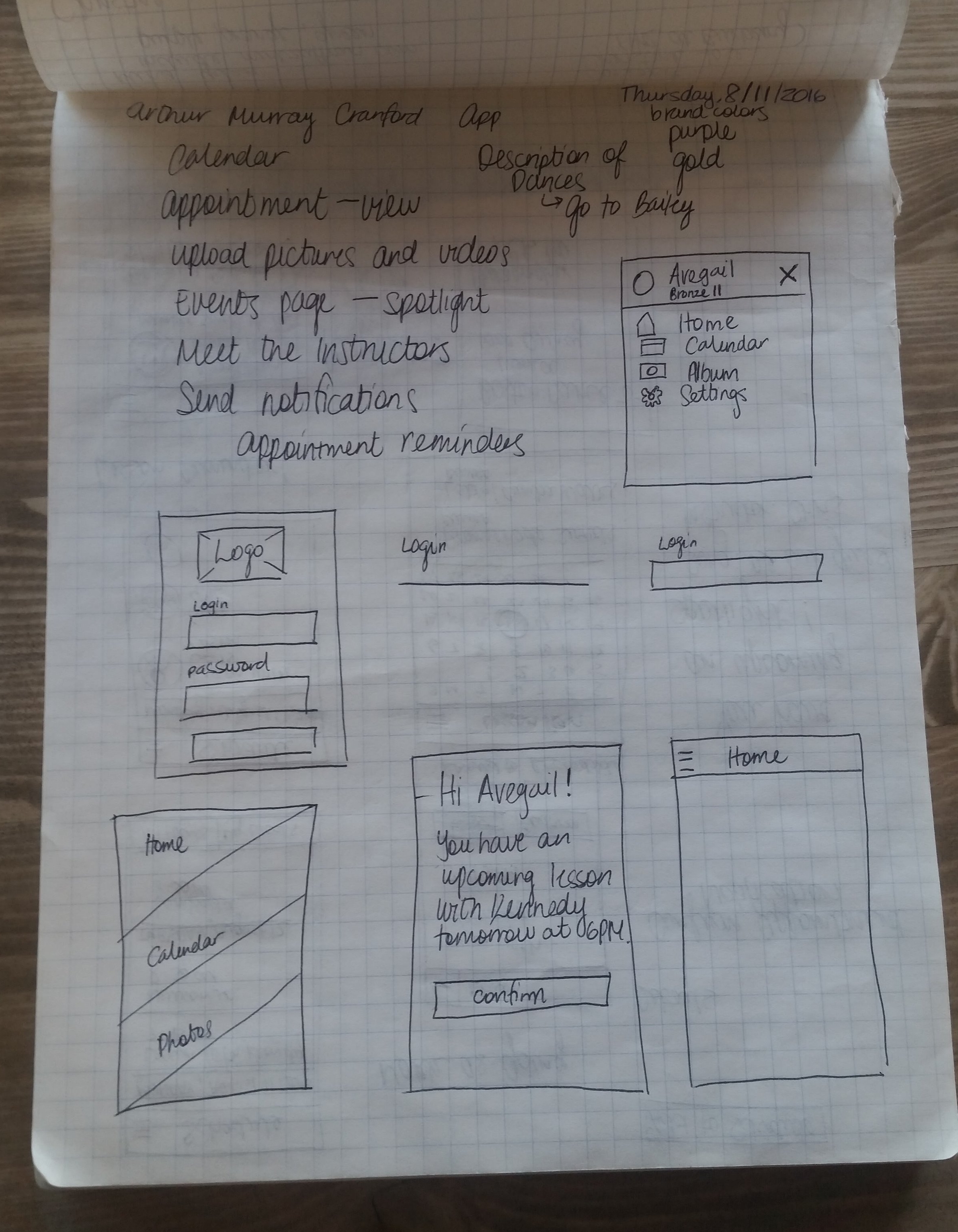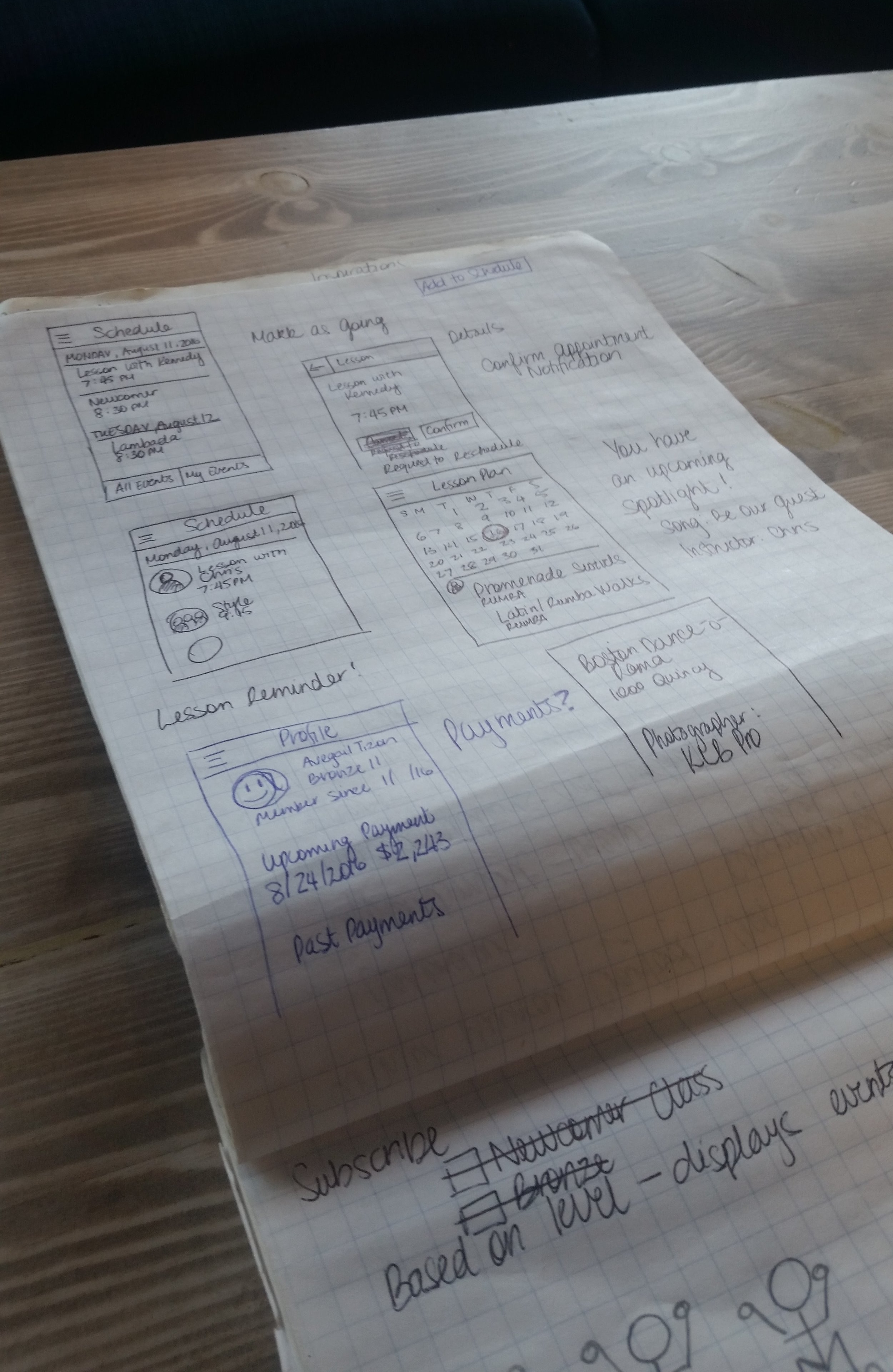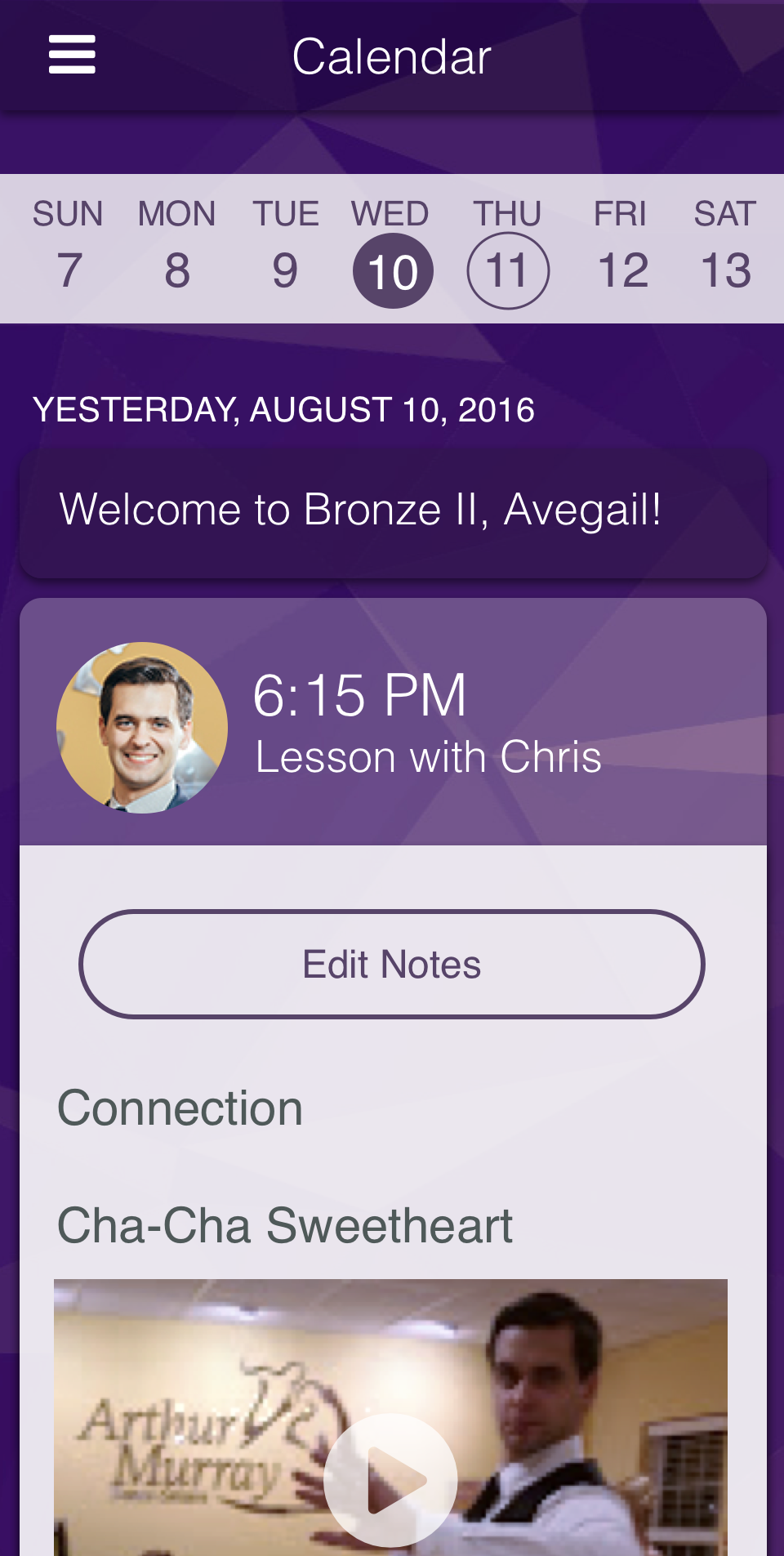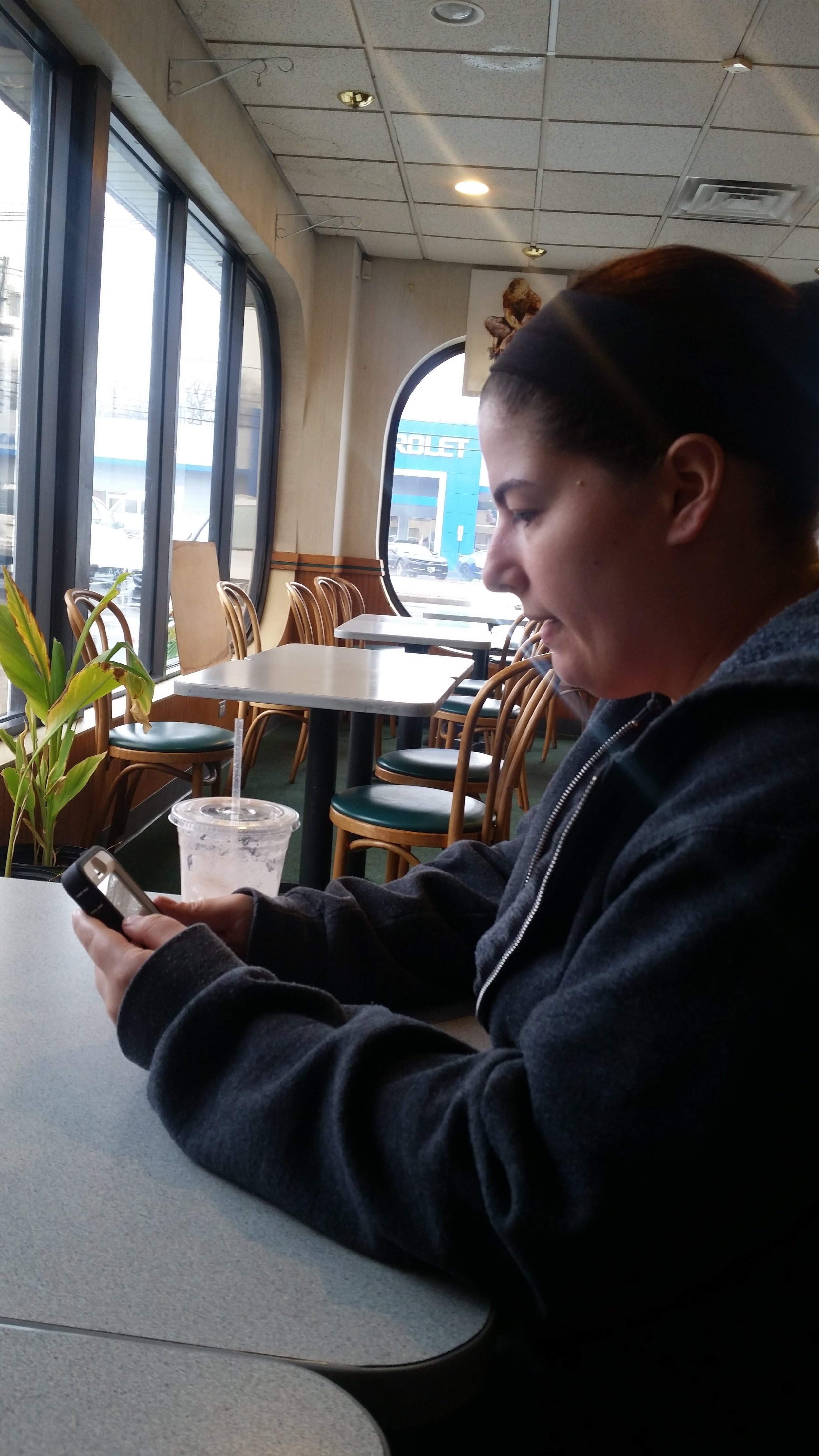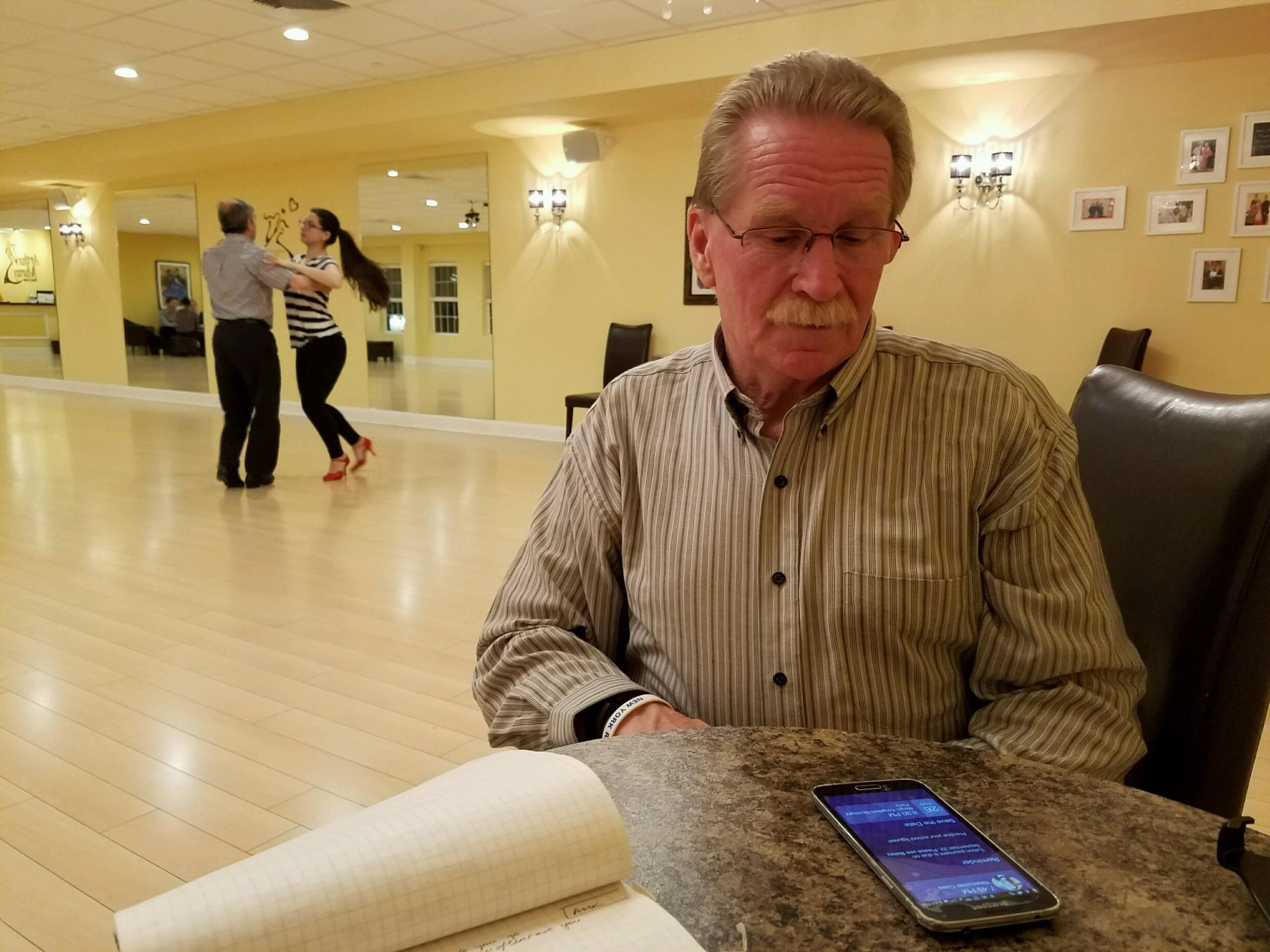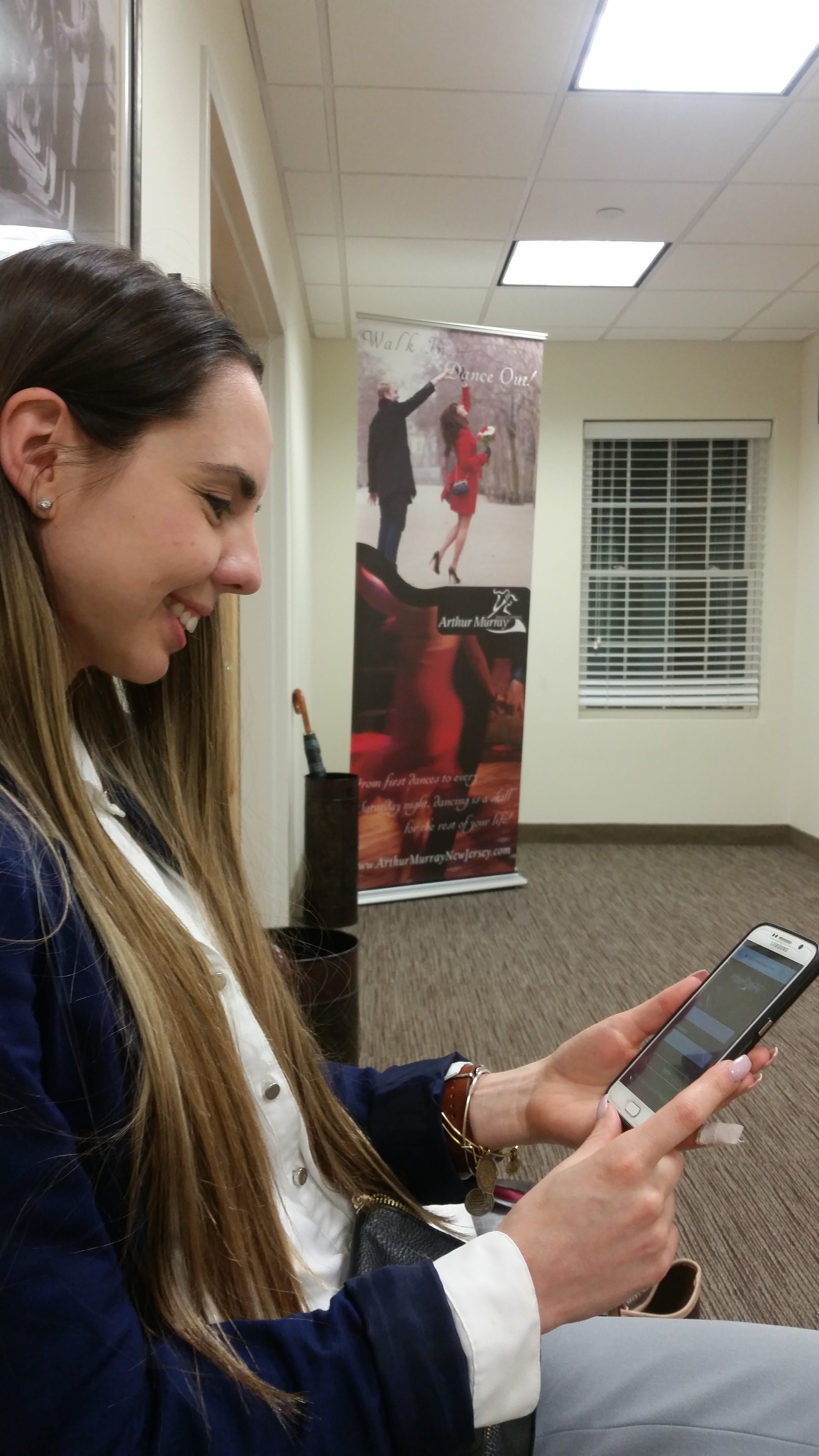Designing a Mobile App
CLIENT
Arthur Murray
My Roles
Research, Design, Prototyping, User Testing
Introduction
Arthur Murray is an international dance studio franchise with over 260 dance centers in 21 countries. Since 1912, Arthur Murray has guided people on all ages on staying physically and socially active through dance.
Challenge
As a ballroom dance student, I had an issue keeping up with my lesson schedule. Arthur Murray doesn't have a system where students can see their schedules real-time. Students make appointments at the front desk and are given appointment cards. They receive a friendly email and phone call reminder 24 hours before their lesson. There have been several instances where I've been booked for a lesson I don't remember booking. Through my investigations on the dance floor, I found that other students had the same problem as well.
Understand
To understand the situation and design an effective solution, I spoke with instructors and students.
Business
After interviewing two dance instructors, I learned the following:
- They want people to be on time.
- They are paid by the lesson.
- They want to eliminate last minute cancellations. That time slot could have been the only time available for another student that week.
- The cancellation policy charges students for the lesson unless students notify them 24 hours in advance. Cancelled lessons that are rescheduled during the same week are not charged.
Users
Arthur Murray students primarily varies by age range and goals. To represent the overall crowd, I've made personas that you will see in the Analyze section. Despite age differences and motivations to what brings them to the studio, I learned the following goals:
- They want to stay active.
- They want a list of all their lessons for their month, group classes, and coach sessions in one place. The group class calendar is available online and on paper; they have to manually place each class onto their schedule.
- They take notes (pen paper) on what they learned on lessons. School figures are certain steps or patterns you need to be able to demonstrate in order to move to the next level. Some students take videos of the instructor dancing a school figure so that they can always have it handy when they're practicing at home.
- They want to stay motivated to keep practicing.
Analyze
This is how I made sense of what I learned from my research.
Personas: Identifying the Target Audiences
Personas keep the design process focused. These are the main characters of the story. If I tried to design for every single person, the design would probably be all over the place. They help shape what the marketing of this app should look; it keeps me on track of what demographic to target if I were to push an ad on Facebook or what voice and tone to use when writing up content.
Below are the three main characters in a nutshell.
Alan, the Social Dancer
Alan, 25, works in Finance, and joined Arthur Murray two years ago to boost his confidence in asking women to dance at social events. He enjoys meeting new people, staying up to date with the news and latest technology, and playing the piano.
Lauren, the Bride-to-Be
Lauren, 31, is an accountant and is getting married in 8 months. She doesn't want her first dance with her husband to feel like she's at prom. She enjoys making crafts for her Etsy business and scrolling through Pinterest for DIY ideas, particularly for her wedding nowadays.
Margaret, the Retiree
Margaret, 55, is a former real estate agent, who has been competitively dancing for 7 years. Dancing is what keeps her brain sharp and her posture straight. Next to her grandchildren's homes, the dance studio is her fun place. She enjoys yoga and doing crossword puzzles. She only uses her phone to chat with her family on WhatsApp.
TAsk Flows
I flowed out the major tasks to help me determine what features are needed and the interaction design to accomplish the task. Major tasks were:
- Confirming a lesson,
- Adding notes and videos to a lesson, and
- Adding photos to the gallery.
Design
Sketches
I sketched out the main screens of the features I found to be most important based on the task flows: the home page, the menu, the calendar, and gallery.
Home Page
The home page:
- greets the students on a first name basis,
- displays the student's lessons and classes that are applicable to that student based on level,
- allows the student to confirm, add notes to, and cancel that lesson for today,
- shows important reminders on when tuition is due, and
- informs the student when his/her solo performance is.
Menu
I decided to go with a hamburger menu for the initial design for it's simplicity. Despite the strong debate of its usability, it is still a symbol that has been widely recognized as the menu. If usability tests prove that it isn't noticeable with this audience and students are having a hard time figuring out how to navigate through the app ("If it's not there, then it doesn't exist."), then I'd replace it with a footer navigation to make the menu options obvious.
Calendar
The calendar contains a history of all lessons, including notes and school figures, for students to review when getting ready to move on to the next level.
Gallery
An admin, preferably an Arthur Murray staff member, creates an album for staff and students to add pictures and videos too. Oftentimes, you see other students take good pictures but you don't know where they post them. Some post it on Facebook but you don't have Facebook or post it on Instagram where there's no function to download it. This provides a good opportunity to bring the community together online.
Visual Designs
Once I had the basics down, I quickly started up the designs on Sketch. Staying loyal to this franchise's brand, I kept the primary color of purple with a hint of gold, the secondary color. I chose a polygon background to add some texture to the layout; keeping a solid purple background gave it an outdated feel to it, reminiscent of websites in the 90s. For typography, I chose Helvetica for its simplicity and legibility, particularly for an audience that consists of an older population. I kept imagery to a minimum so that it wouldn't clash with the textured background; avatars of the instructors appear so that new students will become better familiar with the staff.
Prototype
To demonstrate the interaction, I created a prototype on Invision.
Test
I tested out the features with 3 students; two of them fell under the first persona, the last one fell under the third persona. According to Steve Krug in Rocket Surgery Made Easy, 3 users are enough to find the most important usability issues.
Tasks were successfully completed. The biggest hits were the following:
- Schedule: Students liked the idea of having their lessons, group classes that are applicable to them, and coaching sessions in one place.
- School Figures: Students were delighted to see this feature because it serves as a handy tool for when they're practicing before a test or competition.
- Announcements: This helps keep the students and staff in touch outside of the studio. Announcements take time into dancing the 45-minute lesson.
- Tuition Reminders: With advanced notice, students have time to budget and save.
There were some points for further testing.
- It would have been ideal to interview wedding couples, who'd fall under the second persona, Lauren, the Bride-to-Be. This could not happen based on schedule conflicts.
- Two of the users were very comfortable with technology. The other one was somewhat comfortable but stated that completing the tasks went smoothly. For further testing, I would choose students who aren't that tech saavy to make sure I include their needs.
- Further investigation needs to be done to boost and maintain students' motivation with gamification and motivational resources.
Both staff and students were extremely excited to go through the prototype. I presented it to the franchise owner, who encouraged me to pitch it to headquarters.
Add notes to a lesson.
"I love it!" says Nicole, 26, a professional ballroom dancer in the making. After a lesson, she immediately writes notes in her spiral notebook, which tends to get disorganized.
Confirm a lesson.
Instructors found this feature valuable.
Lessons Learned
- You may have a good solution but you need the business to be onboard to make it happen. Although I didn't get a response when I sent an email over to headquarters to pitch the idea, I realized that it's an even bigger challenge to convince upper management to believe in the value of investing in technology.
- To make it valuable for the staff side, the mobile app would have to sync with their customer management system, set by the franchise headquarters.
- You can apply design principles anywhere; it can intersect with other passions in your life.





